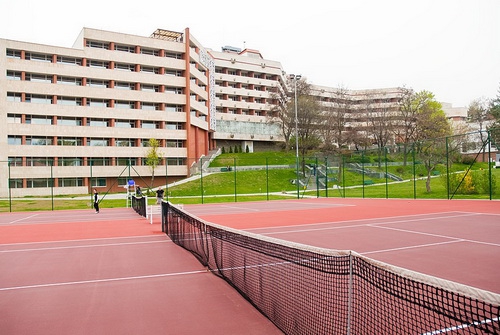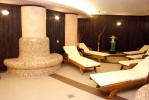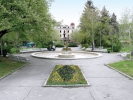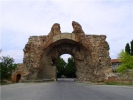SPA Vacations in Bulgaria - Travel To Bulgaria |
4 days / 3 nights in 4 * and 5 *
( Thursday to Sunday )
Why SPA getaway in Bulgaria? Because of the richness of 240 hot springs that have been enjoyed since ancient times by the Thracians and especially by the connoisseurs of balneotherapy - the Romans. There are many hot springs that are built by them and you can enjoy today – like in Hisaria small town that has had its SPA reputation since ancient times. The Roman Emperor Diocletian (244-311 AD) had appreciated it and he has made large constructions in the cities: baths, walls. Bulgaria's ancient history is everywhere - in the capital and in the country.
Day 1:
Arrival at Sofia airport. Transfer to the hotel to Hisaria (SPA Hotel Hisar 4 *) - 175 km, about 2 hours. Free time to enjoy the SPA center of 2000 m2 and the park of the hotel. Dinner. Night.
Day 2:
Breakfast.
Explore the city and its history with a guide. Hisarya is famous for its healing mineral waters: 16 natural mineral springs and 6 drilled mineral water wells. The town is one of the oldest and most popular balneological and SPA center in Bulgaria. The climate is mild and pleasant, and one remarkable phenomenon there is the lack of fog. Because of this fact the town is regarded one of the sunniest spots in Bulgaria. The pleasant climate and the mineral waters of this location have proven to be attractive to settlers since ancient times. The settlement’s heyday was during the Roman era. In 293 Emperor Diocletian declared it a town and this marked the beginning of the construction of massive fortification walls, public buildings, baths, streets, etc. It became the third biggest town in Thracia Province. In terms of state of preservation and uniqueness of its fortification system, the Roman town of Diocletianopolis is among the top-ranked in Europe. The town located on the territory of the ancient fortress and the monuments of culture /fortified wall, amphitheatre, public buildings, Christian basilicas, barracks, villas, thermal springs, and a Roman tomb/ comprise Diocletianopolis National Archaeological Reserve. The town is famous for its beautiful parks. They spread out on an area of 700 decares and include more than 160 decorative tree species.
Departure to Plovdiv (excursion by minibus with English speaking guide), about 45 km . Plovdiv is the second largest city in Bulgaria. It is situated in the Upper Thracian Plain, on the banks of the Maritsa river. Plovdiv is one of the oldest cities in Europe – its history dates back to 4,000 years BC. In the beginning the ancient settlement was situated on the natural elevation between Nebet, Taksim and Dzhambaz hills (the Three Hills). In ancient times Thracians inhabited the Three Hills and built a fortified settlement – the largest city in Thrace. In the 4th century BC Plovdiv was conquered by Phillip of Macedonia. He gave the city one of its many names – Phillipopolis, and had it surrounded by thick fortified walls. Later the Thracians regained their power over the city, but after a series of battles in the 1st century AD it became a part the Roman Empire.
During the period of the Roman Empire, Plovdiv (at those times – Trimontium) was an important regional center. Some of the city high lights were large-scale buildings, facilities and roads. Numerous well-preserved artifacts had remained from those times, such as cobble stoned streets, fortress walls, buildings, water supply and canalization systems. The city was returned within the boundaries of the Bulgarian state during the ruling of Khan Malamir (reigned 831 – 836 AD). Over the centuries, the power over the city was passed between the Bulgarians and the Byzantines. The city even briefly became a possession of the knights of the Fourth Crusade. It finally became part of the Bulgarian state in 1344 AD. The Ottoman troops who invaded in 1364 and gradually conquered Bulgaria, gave new direction of development for the city. The Byzantine architecture was replaced by new buildings with typical oriental features. The new name of the city was Filibe.
During the Bulgarian Revival (18th- 19th century) Plovdiv was an important economic center. The rich traders from Plovdiv showed their wealth through the construction of beautiful and richly ornamented houses. Besides being an architectural center, the city is an important cultural center and has a major contribution to the spiritual awakening of Bulgaria. Plovdiv was of great importance in the struggle for church independence. On 16 January 1878 the city was liberated after the end of the war between Russia and Turkey. However, a few months later the Berlin peace treaty Plovdiv remained within the autonomous region under Ottoman rule – Eastern Rumelia, and was elected to be its capital. This dramatic period of separation lasted for seven years. Meanwhile was prepared an upcoming uprising, planned to bring together the separated regions of the country. On 6 September 1885 the city was conquered and Eastern Rumelia was again united with the Principality of Bulgaria. This memorable date set the beginning of the new history of the country and is celebrated every year as a solemn day. To be visited: The ancient forum - The forum complex, parts of which can nowadays be seen from both sides of the central post office, is the largest in Bulgaria. It was built in the end of the 1st century AD, when Philipopolis obtained a new city planning scheme and a center (forum) according to a Roman model. It covers an area of 11 hectares. The Antique Theater in Plovdiv is situated in the Old Town, in the saddle between the two hills – Dzhambaz and Taksim Tepe. It was built in the beginning of the 2nd century AD during the ruling of Emperor Trayan (98 – 117 AD). It is one of the best preserved antique theaters in the world. The antique stadium in Plovdiv was built according to the model of the Delphi Stadium – only 12 of this kind are preserved in the world. It is approximately 200 meters long; only its northern part and a part of the fortified wall from the 2nd – 4th century have been exposed. Sports contests were conducted here in the past, as well as gladiator fights and animal fights – the renowned Pitian, Alexandrian and Kendresian games. Remains of a hydraulic clock were found at its central entrance. The place used to serve to about 30,000 viewers in ancient times. Ancient Plovdiv Architectural Reserve is a well-preserved complex where visitors can take walks through different historical ages, see ancient buildings adapted to the modern way of life and feel the spirit of the town from the Bulgarian Revival Period. The Old Town, as the complex is known, lies on a natural elevation – the three hills (the closely situated Dzhambaz Hill, Nebet Hill, and Taksim Hill).
Many peoples have inhabited this place through the centuries. And all of them have left traces of their cultures and also the different names they gave to the town. Plovdiv is one of the oldest towns in Europe – it dates back to 4000 years BC. Some of the more interesting houses from the Bulgarian Revival Period are Mavridi House, Nedkovich House, Stepan Hindliyan House, Balabanov’s House, Kyumyurdzhiev’s House, etc. Most of the revival-period houses are very well-preserved and restored at Ancient Plovdiv Architectural Reserve.
Back to the hotel around 16 pm. Free time to enjoy the SPA. Night.
Day 3:
Breakfast.
Free time until noon. Transfer to the hotel in Sofia (Arena di Serdica, 5*). Upon arrival at the hotel you will have your first encounter with the history of this city that now bears his name 4th. These names are in chronological order Serdika, Sredetz, Triaditza, Sofia. At your hotel you will have the unique opportunity to take your coffee next to the remains of the Amphitheatre of Serdica (Arena di Serdica) built by the Romans in the 3-rd-4th century AD. It has an oval shape and measures 60 x 43 m, only a few meters shorter than the Coliseum in Rome. Its capacity was 25,000 spectators and you can see seven rows of seats that have remained in their original position.
Sofia has been settled for many millennia. In honor of its hot springs, in the 8th century BCE the Thracian tribes settled here gave the city its first name – Serdika or Serdonpolis.In the 1st century BCE, Serdika was captured by the Romans, who transformed it into a Roman city. During the reign of Emperor Marcus Ulpius Trajan (reign 98-117 CE), the city took his name, Ulpia Serdika, and became the administrative center of the region. Serdika was the favorite city of Constantine the Great (reign 306-337), who said “Serdika is my Rome.” In roughly 175, massive fortified walls, with four watchtowers were built to protect the city , and a second outer fortified wall was added during the 5th-6th centuries. The city’s flourished for a second time under Justinian the Great (reign 527-565). At the beginning of the 9th century, the Bulgarian Han Krum (reign 803-814) invaded Serdika. The city became an inseparable part of The First Bulgarian Empire (7th-9th centuries) under Han Omurtag (reign 814-831). At this time the city was renamed Sredets (The Center), because of its central strategic location. In 1382, the city fell to the Ottomans. It was liberated five centuries later, in 1878, and on April 3, 1879 it was declared the capital of the newly-liberated Bulgarian nation. Sofia preserves many valuable monuments to its long and storied past.
You will visit on foot the center of the Bulgarian capital with a guide (about 3 hours). You will see the church of St Sophia dating from the fifth - VI-th century and gave the current name to the city, the great Alexander Nevsky Cathedral with its golden domes, the Rothonde St George - III - IV-century ramparts of the city and feel the history of this city that lasts more than 5000 years. Day 4: Breakfast. Depending on the time of the flight - free time and transfer to the airport.
The price includes :
- 3 nights in 4* and 5* + 3 breakfasts 1 dinner at Hotel Hissar (without drinks )
- 1 SPA procedure at Hotel Hissaria
- 1 guided tour of the city of Hissaria
- 1 excursion to the city of Plovdiv Entrance taxes for the monuments
- 1 guided tour of the city of Sofia Transfers airport-hotel-airport
- The transport between Hisaria and Sofia
The price does not include:
- Airline tickets Insurance Meals and drinks not mentioned in the program Personal expenses and tips










